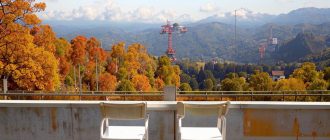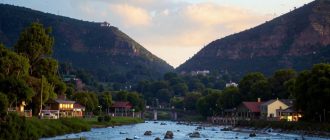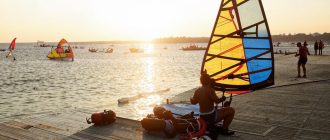Russia is a huge country, incomprehensible to the mind, with a rich culture and complex history. And eloquent evidence of this are the original cities, which from the depths of centuries have brought to us their uniqueness and unusual traditions.
Veliky Novgorod
Veliky Novgorod was founded in 859. It was first mentioned in the “Tale of Bygone Years” during the reign of the first Russian prince Rurik. The city, located on the Priilmen lowland, on the Volkhov River, occupied a favorable position. It should be noted that Veliky Novgorod became the first free republic in 1136. It lost its independence during the reign of Ivan the Terrible – in 1569-1570.
Main sights: modern Veliky Novgorod is characterized by a special way of life. Attractions related to its rich and rich history can be found here at every step. St. Sophia Cathedral, built in the XI century, was the center of spiritual life of Novgorodians for several centuries. However, during the revolution the Bolsheviks briefly turned it into a museum of atheism. Rurik’s Fort reminds about one of the tragic pages in the history of Great Novgorod, when the oprichniks executed many people.
What to try: the local cuisine tries to surprise guests with culinary delights. Beef stroganoff from veal tails, rich soup from Novgorod pike-perch, Old Russian-style crumble of fresh cabbage leaves on meat broth and “honey bread” – printed gingerbread – this food is worthy of admiration.
What to buy as a souvenir: natural leather amulets decorated with semi-precious stones, famous Valdai bells, wooden statuettes of heroes, lapti and birch bark baskets – these souvenirs have always been popular among tourists. Each thing is handmade and represents a small masterpiece.

Nizhny Novgorod
Nizhny Novgorod was founded in 1221 by Vladimir Prince Yuri Vsevolodovich. At first, the city was a well-fortified fortress, which stood guard over the south-eastern borders of Ancient Russia. Gradually Nizhny Novgorod acquired a more civilized look. Very favorable geographical position promoted the development of trade, establishing economic ties with neighbors. In the XIX century, for example, the famous Nizhny Novgorod Fair began to work, gathering famous industrialists and merchants from Russia and Europe.
The main attractions: modern Nizhny Novgorod perfectly combines the features of the past and present. The majestic Nizhny Novgorod Kremlin, where in 1612 Kuzma Minin summoned the people to repel the enemy, four magnificent embankments, a cable car across the Volga – this is not a complete list of unusual places that numerous tourists enjoy.
What to try: mashed potatoes with ginger oil, summer Volga okroshka with dried fish, kudyabliks – miniature chebureks with different fillings, and famous Gorodets gingerbread for dessert – this menu will please any gourmet.
What to buy as a souvenir: Khokhloma wooden dishes with decorative painting are the most popular souvenirs. This real work of art has always been in great demand. And, believe me, it is simply impossible to resist the temptation to buy it immediately.

Rostov the Great
Rostov the Great was founded in 862, it is considered one of the most ancient cities and is part of the Golden Ring of Russia. In XI-XII centuries Rostov principality was the most important economic and religious center of the country. The city was calm, peaceful and located at the junction of many trade routes. Local residents did not think about external danger and did not build defensive redoubts. Historians believe that this situation saved Rostov the Great from destruction when it was captured by nomads.
Main sights: Rostov Veliky is a mold of the history of Ancient Russia that has survived to us. It is easy to make sure of it if you make an excursion to the monasteries and temples of XVI-XIX centuries. Rostov Kremlin with the Bishop’s Court, Metropolitan Garden and Cathedral Square is a magnificent picture of the past that takes your breath away.
What to try: Rostov Veliky’s cuisine amazes the city’s guests with unusual culinary delights. Stuffed pikeperch, shanezhki, spelt, rose petal jam, onion marmalade and sage leaves in batter are prepared according to ancient recipes, preserving a special flavor.
What to buy as a souvenir: as a souvenir of Rostov Veliky, you should probably buy handmade pottery made of the famous black-leaf pottery. And children will be very happy with the exquisite clay whistles.

Murom
One of the oldest cities in Russia, Murom, located on the left bank of the Oka River, was founded in 862. Small Murom, by fate, has a turbulent and tragic history. The city was sometimes in the thick of bloody princely quarrels, which mostly affected ordinary people.
The main sights: modern Murom to some extent retained the look of the Old Russian city. The spirit of the hero Ilya Muromets is felt here at every step. There is a monument to him on the city embankment. A cable-stayed bridge built in 2009 is considered to be the pride of Murom residents. The Spaso-Preobrazhensky Cathedral, a miraculously preserved structure of the XVI century, is of genuine interest to the guests of the city. On July 8, the Day of Family, Love and Fidelity, Russians go to the city to worship the relics of Saints Peter and Fevronia, who rest in the Trinity Cathedral of the Murom Holy Trinity Nunnery.
What to try: city residents love to cook food according to ancient recipes. Uha on chicken broth with Oka fish, shti with oat groats and butter is a real feast for the stomach. Special mention should be made of the famous grated kalacha, which have a unique flavor.
What to buy as a souvenir: dolls in kokoshniks made of birch bark are in great demand. By the way, saltcellars and bread baskets are made of the same material.

Derbent
Derbent – the southernmost city of Russia is located on the western coast of the Caspian Sea and was founded in 438. And the first settlements on the territory of modern Derbent date back to the end of the 4th millennium BC… This fact makes the city the oldest in Russia with the age of over 5000 years. In 1813 it became part of the Russian Empire. This became possible after the signing of the Gulustan peace treaty. Previously, Derbent changed hands and was the cause of constant wars between states.
Main sights: in Derbent there are many notable places that are associated with the turbulent past. This is the fortress of Naryn-Kala, where the Khan’s bath attracts special attention. It was rumored that thanks to a special device it was heated by an ordinary burning candle. The famous Derbent Wall reminds of the time when Iranian rulers of the Sassanid dynasty built a powerful defense line here in the V-VI centuries.
What to try: Derbent is famous for its hospitality. And Dagestani cuisine can surprise even the most capricious lovers of delicious food. Mountain soup “shapshi”, apricot porridge with linseed urbech, chudu – thin, almost transparent pancakes with different fillings will leave a long memory as masterpieces of national culinary art.
What to buy as a souvenir: Kubachi silver jewelry made by local craftsmen are the most bought souvenirs. Each of them is a real creation of human hands and talent. In Derbent you can also buy bright, beautiful carpets.

Kerch
Kerch finally became part of the Russian Empire in 1784. An important historical event was due to the signing of the Kyuchuk-Kainarji peace. From that moment, the “Crimean pearl” got a new life. Today Kerch is a modern city, which, however, has not lost the features of the distant antiquity. Probably, for this reason there are always a lot of tourists who want to get acquainted with its sights.
Main sights: Kerch is a repository of historical secrets. An example of this is the Great Mithridatic Staircase leading to the top of the mountain and consisting of 432 steps, as well as the fortress of Yeni-Kale and the Tsar’s Mound in the village of Adzhimushkay. Of course, one of the main modern attractions of Kerch is rightly considered to be the Crimean Bridge, built in 2018.
What to try: the proximity of the Black Sea strongly affects the local cuisine. Kerch oysters have a spicy flavor. And pilaf from Black Sea mussels is a delight even for gourmets. The combination of several historical cultures has noticeably influenced the city’s cooks. Karaite pies from puff pastry with meat filling are one of Kerch’s calling cards.
What to buy as a souvenir: in the multinational city you can always buy a variety of souvenirs. Many guests of Kerch take home as a gift blankets, plaids, carpets. Products made of onyx are also very popular.

Feodosia
Feodosia is one of the most ancient cities of our country, which is located in the southeast of the Crimean Peninsula. It was founded in the VI century BC by Greeks from Miletus. The share of the city had many trials. Its historical fate was complicated: one power was replaced by another. In 1771, after a successful war with the Turks, Theodosia became part of the Russian Empire. It is said that with the easy hand of Catherine II, who visited this corner of Crimea, was given the green light for future tourism.
Themain attractions: now Feodosia has acquired a new image. However, the remnants of the glorious past successfully complement the image of the Crimean city. Sailor’s Park – one of the favorite places of rest of the city’s residents and numerous tourists. A special atmosphere of silence and tranquility reigns at the place of the slave market of the Ottomans, which once drowned out the local neighborhood with its noise. The Mufti-Jami Mosque, built 400 years ago, is a reminder of the former rulers and its magnificent building is still standing today.
What to try: bean soup bakla shorbasi, raw dried sausage sudzhuk, which in the past centuries reached the right condition under the saddle of a horse of a dashing nomad, sarma – stuffed cabbage wrapped in grape leaves – this assortment of culinary creations in Feodosia will not leave anyone indifferent. And for dessert you should try baklava – an exquisite oriental delicacy.
What to buy as a souvenir: to remember the beautiful city you should buy aromatic sachets – small bags filled with Crimean rose petals, rosemary, melissa and other fragrant herbs. Painted brightly patterned dishes made of ceramics, as well as caps and stripes – a great gift for loved ones.

Smolensk
Smolensk has always been in the center of the most important historical events. It was destined to survive the invasion of Lithuanian and Polish invaders, to defend independence in the Time of Troubles, to fight to the death in the War of 1812 with Napoleon’s army. It is believed that Smolensk was founded in 882 by Prince Oleg. He seized the city by force and annexed it to Ancient Russia.
The main attractions: modern Smolensk has managed to preserve the long-standing traditions that have passed to them from their distant ancestors. The ancient Russian city on the Dnieper River is adorned by the Uspensky Cathedral, a temple located on top of Sobornaya Hill. Its construction began back in 1677. Traces of military glory are kept by the Smolensk fortress, which was erected by order of Ivan the Terrible. And you should definitely visit the Lopatinsky landscape garden with singing fountains. This is the most favorite resting place of citizens and tourists.
What to try: Smolensk cuisine has always been characterized by pleasant surprises. Flour porridge – kulaga, thick soup on vegetable or meat broth – krupenya, fish ear in the Gagarin way, pokacheniki – lean potato cutlets are considered the local culinary pride. And over a samovar with a cup of fragrant tea will go well otluchentsy – a kind of candy made of raspberries and honey.
What to buy as a souvenir: Smolensk is famous for its incredibly beautiful embroidery. Linen tablecloths, towels, outfits painted by local craftsmen are sold out. Clay traditional bells along with ceramic dishes – cute for the eye souvenirs, which are also popular.

Yevpatoria
Unlike other Crimean cities, Yevpatoria is very unlucky with its geographical location. Constant sea and steppe winds noticeably impoverished the surrounding nature. And the most important problem was the lack of fresh water, which was hardly extracted from underground sources. During the long and difficult history the city changed two names. And the third and last name it received thanks to Catherine II in 1774. After a long rule of the Ottomans ceded the city to the Russian Empire. And on the map of our country appeared Evpatoria.
The main attractions: today the city has become one of the most famous Crimean resorts. Striking modern changes in the appearance of the city did not prevent to notice traces of the historical past. The monastery of dervishes, built in XV century, has completely preserved in itself former features. Evpatoria’s Gorky embankment is considered an unchanging symbol of the cultural center of the city. Its length is 875 meters, and there are buildings with unique architecture, erected in the beginning of the last century.
What to try: after a long walk in the clean sea air guests of Evpatoria usually try to taste the most popular dishes of the local cuisine, about which they knew only by hearsay. Lentil light soup-puree, cold appetizer yazma, hot, right from the fire, chir-chirs – small chebureks with stuffing from meat, vegetables and cheese – this menu will delight all lovers of tasty food.
What to buy as a souvenir: miniature, elegant ships in glass bottles, outlandish sea shells made of coral – the most popular souvenirs of Evpatoria will serve asa great gift for your family. However, the aromatic oils brought from the ancient Crimean city will be glad.

Pskov
Pskov was founded in 903. The city flourished in 1348-1510. It was during this period that the independent republic of Pskov was established. At the beginning of the XVI century the city became a part of the Russian centralized state and lost its former influence. In the 60s of the last century Pskov was considered quite a large industrial center of the country.
Main sights: one of the ancient cities of Russia has preserved its original culture and centuries-old traditions. This is evidenced by the sights of the city. Pskov Kremlin, Trinity Cathedral, Olga Chapel, Pushkin Mountains – these extraordinary corners of the city seem to be imbued with the spirit of antiquity. On Sokolikha Mountain there is a majestic monument dedicated to the Battle of Ice, when Alexander Nevsky defeated the knights of the Livonian Order.
What to try: Pskov cuisine is faithful to the traditions of ancestors. From the depths of centuries there is a fame of nakrepniki – open pies filled with groats, long strips of fish or meat. The gray soup with crumbles – cabbage pokers is extremely tasty. The favorite fish of locals is snotok: it is dried on lake sand with salt. The result is an exquisite delicacy, which is also popular among the guests of the city.
What to buy as a souvenir: dishes made of Pskov ceramics, forged items from the Blacksmith’s Yard and famous printed Izmir gingerbread are wonderful souvenirs that are worth buying to keep the memory of the ancient city built by Princess Olga herself for a long time.

Uglich
Uglich was founded in 937. The fate of the small town was tragic. During its history it was repeatedly subjected to ruin, it was burned to the ground. But Uglich was restored again. In Soviet times it turned from a settlement into a civilized city with a population of more than 30 thousand.
The main sights: the Resurrection Monastery, the Zimin Court, the Chambers of Uglich princes are still full of former splendor. And the Museum of Dolls – the local pride – constantly organizes exhibitions, which are mostly enjoyed by children, of course.
What to try: the cuisine of Uglich is a combination of culinary flavors of the old times and new trends. For example, you may be somewhat confused by the name of the original dish – ear. Roast of meat, where the main role is played by thick rich sauce, sounded just like that in the language of ancestors. As well as fish dumplings – dumplings made of pikeperch and pike mince.
What to buy as a souvenir: Uglich is famous for folk crafts. Birch bark caskets, chests, strange figurines made of ceramics, painted wooden spoons, men’s shirts and women’s sundresses made of linen fabric – these souvenirs are in great demand among tourists.







